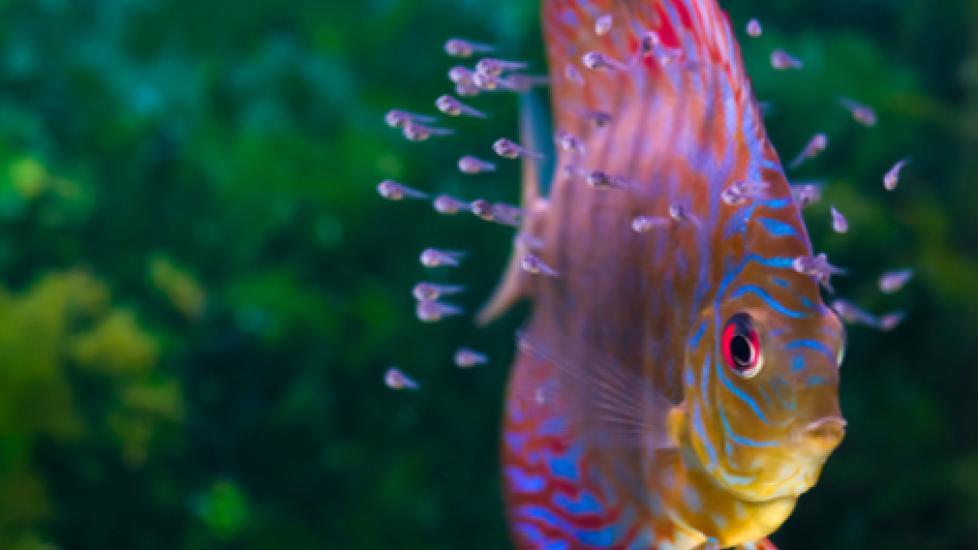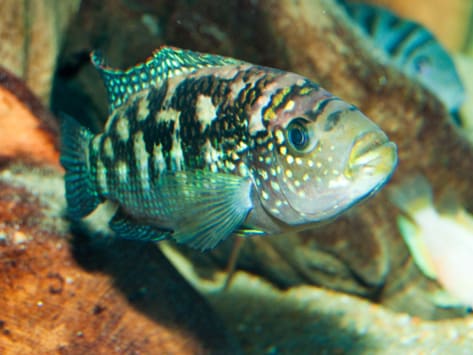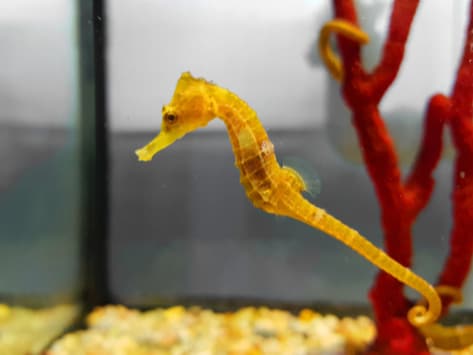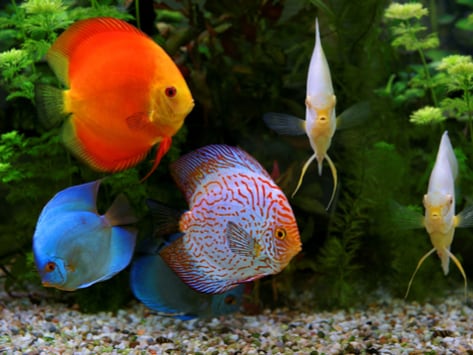How to Plan a Single Species Aquarium
By Kenneth Wingerter
Most aquarists like variety. This is especially so with new hobbyists. Community tanks — that is, aquaria that display a broad number and diversity of species — satisfy this soft spot for color, form, and habit. Even so, with time and experience, many aquarists develop an interest in a fish or invertebrate of a particular species (or otherwise smallish group).
In some situations, an aquatic animal may fit in with a conventional community perfectly; in others, it is best housed by itself. For the latter case, the specimen is best kept (either alone or with like kind) in an aquarium that is specially tailored to suit its needs: a species tank.
Single species tanks are hardly boring. In fact, they can be far more unique and visually appealing than the more typical mishmash of species in a community tank. Above all, they afford the keeper an opportunity to create the most happy and healthy home possible for their favorite animal.
Why Choose a Single Species Tank Set-Up?
A species tank can be set up for either freshwater, brackish, or marine livestock. Though some animals must be kept in a species tank, any animal can be.
There are a handful of reasons why one would opt to set up a species tank. These include:
- The species requires an unusual type of habitat
- The species is exceptionally timid or delicate
- The species is exceptionally aggressive/territorial
- The species is predatory
- The species prefers to live with large numbers of its own kind (i.e., colonies or schools)
- The species exhibits slow or highly specialized feeding behaviors
Fish Species that Need Their Own Tanks
Most often, a species tank is best for animals that need a particular physical environment — even more so if that environment is not hospitable for most other species. For example, few fishes could cohabitate with a mudskipper, as the tank layout would consist mainly of terrestrial or very shallowly submerged bottoms.
Similarly, most fish store species (which are overwhelmingly tropical) could not be kept in a tank that is set up for cool-water fishes such as darters.
Timid or delicate species should be kept alone for obvious reasons. A Pantadon Butterflyfish, for example, is likely to have its long, draping finnage chewed off by its tankmates. A shy animal such as a Fire Eel might become stressed as its hiding space is repeatedly invaded by wandering bottom dwellers such as Corydora Catfish. Species tanks for these types of animals can be set up (from tank shape to lighting to selection of aquascaping materials) with their comfort and security in mind.
Sometimes, an aquarist will have no choice but to keep an especially aggressive specimen by itself since aggressive interactions very often result in fish deaths.
Some aquarists erroneously assume that only carnivorous species can be aggressive; however, certain herbivores, such as many of the “mbuna” cichlids, can be absolutely brutal in defending their territories. Some of these species, such as the Jack Dempsey Cichlid, might not tolerate any other individuals in their proximity (except, perhaps, for a mate).
While predators can sometimes be safely kept in smartly assembled groups, they are best kept singly. As they grow, highly adapted predators such as Gulper Catfish become capable of consuming most other fishes — even of their own size.
Exodon Tetras, which eat the fins and scales of other fish, can actually prey on much larger individuals than themselves. And the highly carnivorous Piranha, unless kept by themselves or in large groups, might eat each other.
Image: Jack Dempsey Cichlid
The Safety of a Single Species Tank
In some cases, a species tank might be set up to house large groups of a species to create a powerful visual impact (which it does well), but also to afford the group as much space and security in the tank as possible. For example, a massive school of Harlequin Rasboras can be given a sizable open swimming space, or a breeding colony of Brichardi Cichlids can rear their young without threats from baby-fish-eating cohabitants.
There are some fish species out there that just do not get their fair share of food when in a community tank. This is because they are slow or need assistance eating in a captive setting. For example, seahorses more or less need to nibble little bits all day long. They prefer to eat (or sometimes only eat) live foods such as adult brine shrimp. Obviously, this type of feeding strategy would fail in a community tank, as swifter tankmates would soon be grossly overfed before the seahorses got even a single bite.
The same applies to many ambush predators. These fishes need their food to come to them, and so might need time for the right chance crossing to occur before they strike. Hence, a Fugu Puffer might never get its feeder goldfish if kept with a lightning-fast, kill-on-sight roving carnivore such as a Siamese Tigerfish.
Image: Seahorse
The Visual Beauty of a Single Species Tank
Finally, an aquarist might set up a species tank simply to showcase and highlight a particular animal. Yes, an aquarium with a lone fish in it can look amazing! While these species tanks are encountered most often as public exhibits, there is no reason why the home aquarist cannot display single-species, single-specimen aquaria for purely aesthetic purposes.
It is sometimes difficult to remain an extreme purist when maintaining species tanks. Thus, some limited number of appropriate heterospecifics (i.e., other species) may be deemed useful for utilitarian purposes and housed with the target species. For example, a large breeding population of guppies may be kept as a resident food source for a gar. Or a large Pleco Catfish may be kept as a housecleaner for a Red Devil Cichlid. That being said, a species tank is always set-up primarily to host the target species, with their specific environmental needs in mind.
And if variety is still appealing to you — try a number of different species tanks!
Image: Discus (Symphysodon)
*
Main Image: Discus Fish with Brood



